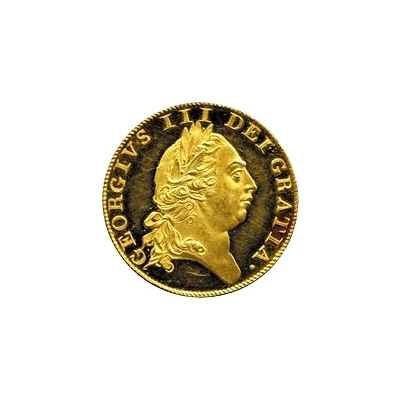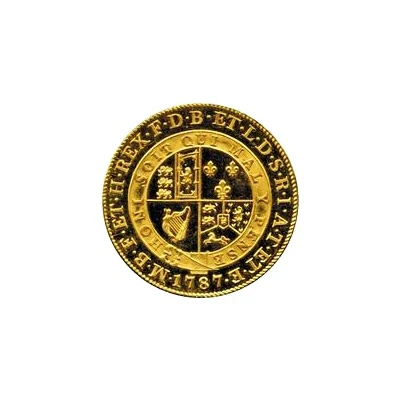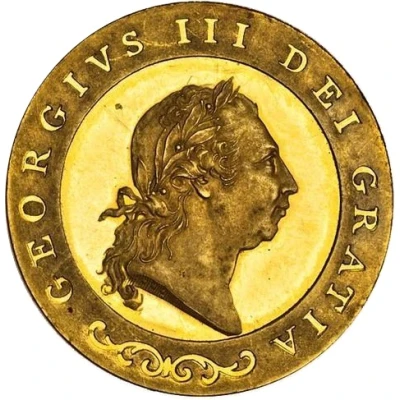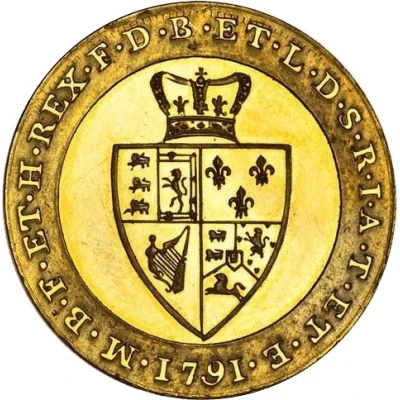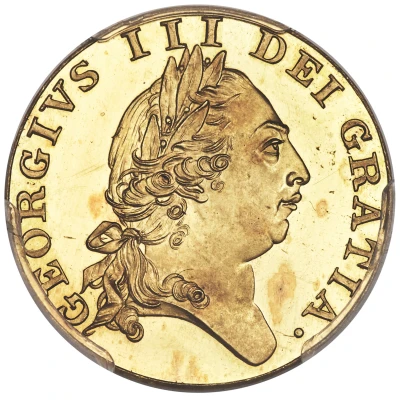
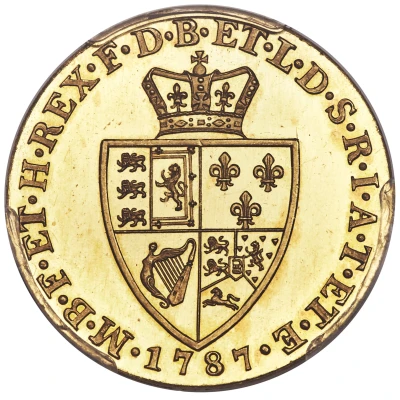

1 Guinea - George III 5th portrait; 'Spade' Guinea
| Gold (.9167) | 8.35 g | 24 mm |
| Issuer | United Kingdom (United Kingdom, British Overseas Territories and Crown Dependencies) and Australia |
|---|---|
| King | George III (1760-1820) |
| Type | Standard circulation coin |
| Years | 1787-1799 |
| Value | 1 Guinea (21⁄20) |
| Currency | Pound sterling (1158-1970) |
| Composition | Gold (.9167) |
| Weight | 8.35 g |
| Diameter | 24 mm |
| Shape | Round |
| Technique | Milled |
| Orientation | Medal alignment ↑↑ |
| Demonetized | Yes |
| Updated | 2024-10-08 |
| Numista | N#13158 |
|---|---|
| Rarity index | 46% |
Reverse
Crowned quartered shield of arms in the shape of a spade, legend around, date below.
Script: Latin
Lettering:
·M·B·F·ET·H·REX·F·D·B·ET·L·D·S·R·I·A·T·ET·E·
1793
Translation: King of Great Britain, France and Ireland, Defender of the Faith, Duke of Brunswick and Lüneburg, Arch-Treasurer and Elector of the Holy Roman Empire
Engraver: Lewis Pingo
Edge
Reeded
Comment
The guinea was struck at 44½ to the pound troy, giving a standard weight of 24/89 troy ounce (129.4 grains).
This type is one of the 1800 Australian Proclamation coins. In 1800 the then-Governor of New South Wales, Philip Gidley King issued a proclamation that ten specific British, Netherlands, Indian, Portuguese and Spanish coins were to be brought into the colony and given inflated denominations than what was indicated on the coins so that they would say in circulation in the colony. This Guinea had a value of 1 Pound and 1 Shilling.
Interesting fact
One interesting fact about the 1 Guinea - George III (5th portrait; 'Spade' Guinea) coin is that it was used as a means of payment for the purchase of slaves in the British colonies. The coin was first introduced in 1787 and was used to facilitate the slave trade, which was legal at the time. The coin's value was equivalent to the price of a slave, and it was used to pay for the transportation and purchase of enslaved people. This fact highlights the coin's controversial and problematic history, and it serves as a reminder of the inhumane practices that were prevalent during that time period.
Price
| Date | Mintage | VG | F | VF | XF | AU | UNC |
|---|---|---|---|---|---|---|---|
| 1787 | - | - | - | - | - | - | |
| 1788 | - | - | - | - | - | - | |
| 1789 | - | - | - | - | - | - | |
| 1790 | - | - | - | - | - | - | |
| 1792 | - | - | - | - | - | - | |
| 1793 | - | - | - | - | - | - | |
| 1794 | - | - | - | - | - | - | |
| 1795 | - | - | - | - | - | - | |
| 1797 | - | - | - | - | - | - | |
| 1798 | - | - | - | - | - | - | |
| 1799 | - | - | - | - | - | - |
Values in the table are based on evaluations by sales realized on Internet platforms. They serve as an indication only for 1 Guinea - George III (5th portrait; 'Spade' Guinea) 1787-1799 coin.
